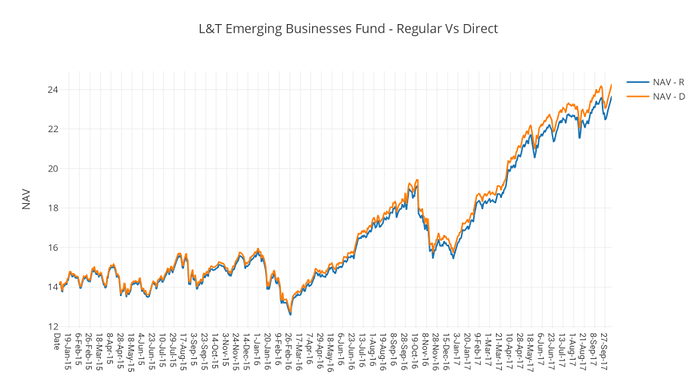Hi Shivam,
NAV of a scheme is derived from the summation of several factors or variables which is known as the profitability metric. It consists of the following variables :
(1) Interest income
(2) + Dividend income
(3) + Realized capital gains
(4) + Valuation gains
(5) – Realized capital losses
(6) – Valuation losses
(7) – Scheme expenses
As you can see the 7th variable which is the scheme expenses is a subtraction so basically the NAV would be lesser if this is higher. The expense ration is nothing but the scheme expenses. The expense ratio is generally denoted as a percentage which is specified as per annum. For the calculation of the NAV, the scheme expense is calculated and deducted on daily basis.
Now, for a regular plan of a particular mutual fund scheme the expense ratio is higher than that of a direct plan of the same scheme which means that the scheme expenses is higher for a regular plan. Thus, the NAV of a direct plan will always be higher than that of a regular plan. This means that the returns generated for a direct plan is essentially much higher than that of a regular plan.
Below is a graph which shows the difference in the NAVs of a direct plan and regular plan of L&T India Emerging Business Fund. The NAV shown in the figure for a particular month is the average value of daily NAVs released for that particular month. The orange line represents the NAV of direct plan and the blue line represents the NAV of a regular plan. You can observe that the lines are slightly overlapping each other from the month of January 2015 and there is a huge divergence in the month September 2017. This is because the AMC had gradually revised the expense ratio of regular plan and the difference in the NAVs of direct and regular plans became more significant.
So, investing in the direct plan of this fund would have yielded you more returns than investing in a regular plan of the same.
